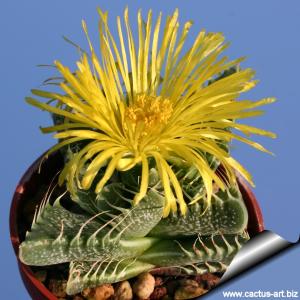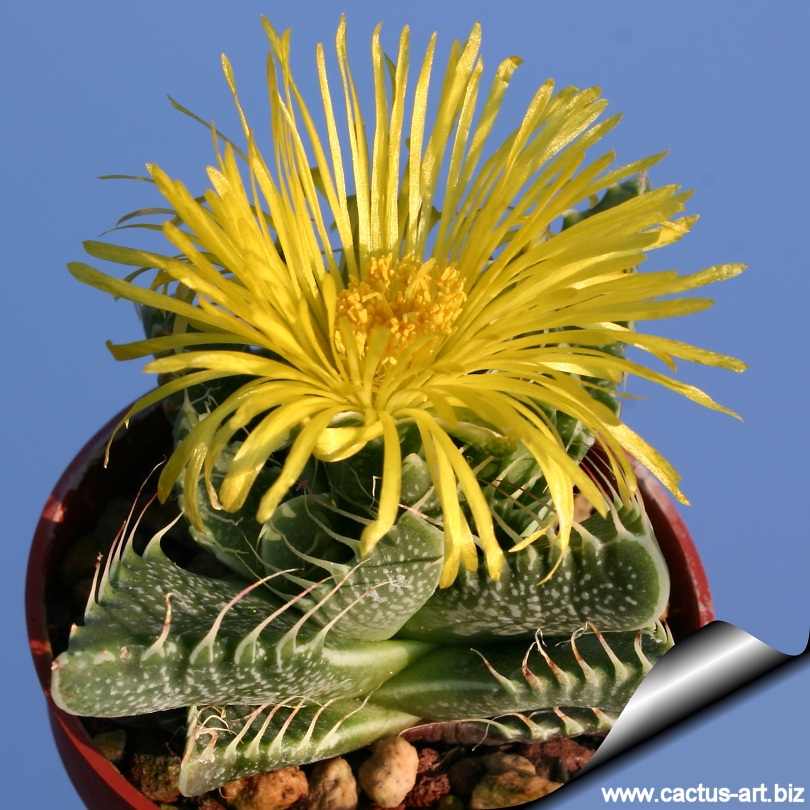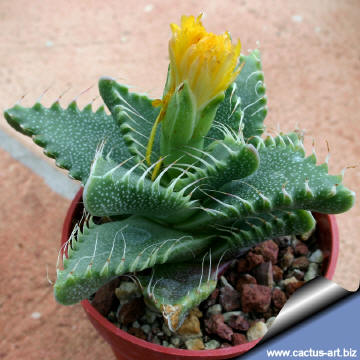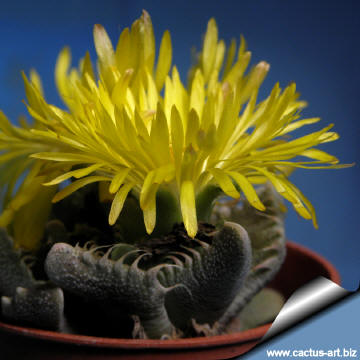-
x
Description
|
Popular clump-forming species with thick, green triangular leaves with up to ten pointed, soft recurved "teeth" along the edges, making them look like open jaws. Flowers are yellow and last for a very long time in autumn.
Family: Mesebrianthemaceae (Aizoaceae) Scientific name: Faucaria tigrina (Haw.) Schwantes Origin: South Africa (Eastern Cape Province: Albany)) Etymology: The genus name Faucaria is Latin for "jaws" due to the teeth-like structure on the leaf margins. Note: Faucaria tigrina is a variable taxon that now comprises many Faucaria’s form previously considered independent the species.
|
|
|
|
|
|
|
Decription: Succulent clump-forming perennial, rosettes, usually stemless (but can builds short woody stems with age). It clumps more than the plants in the 'felina' group and has often a reddish tinge.
Note: The several species of this South African genus of succulents are so similar that many may be hybrids.
Cultivation: The plants in this genus represent some of the more easily cultivated succulent species ; These plants grow on winter rain and were heading for spring-summer dormancy. Requires little water otherwise their epidermis breaks (resulting in unsightly scars). Water moderately from the middle of summer to the end of winter, and keep the compost almost dry when the plants are dormant. Water minimally in spring and summer, only when the plant starts shrivelling (, but they will generally grow even in summer if given water) In areas prone to frost, grow in an intermediate greenhouse or conservatory, in pots of cactus compost, obtainable from good garden centres. Keep cool and shaded in summer, but provide maximum light the rest of the year. |
|
|
|
|
|
|





